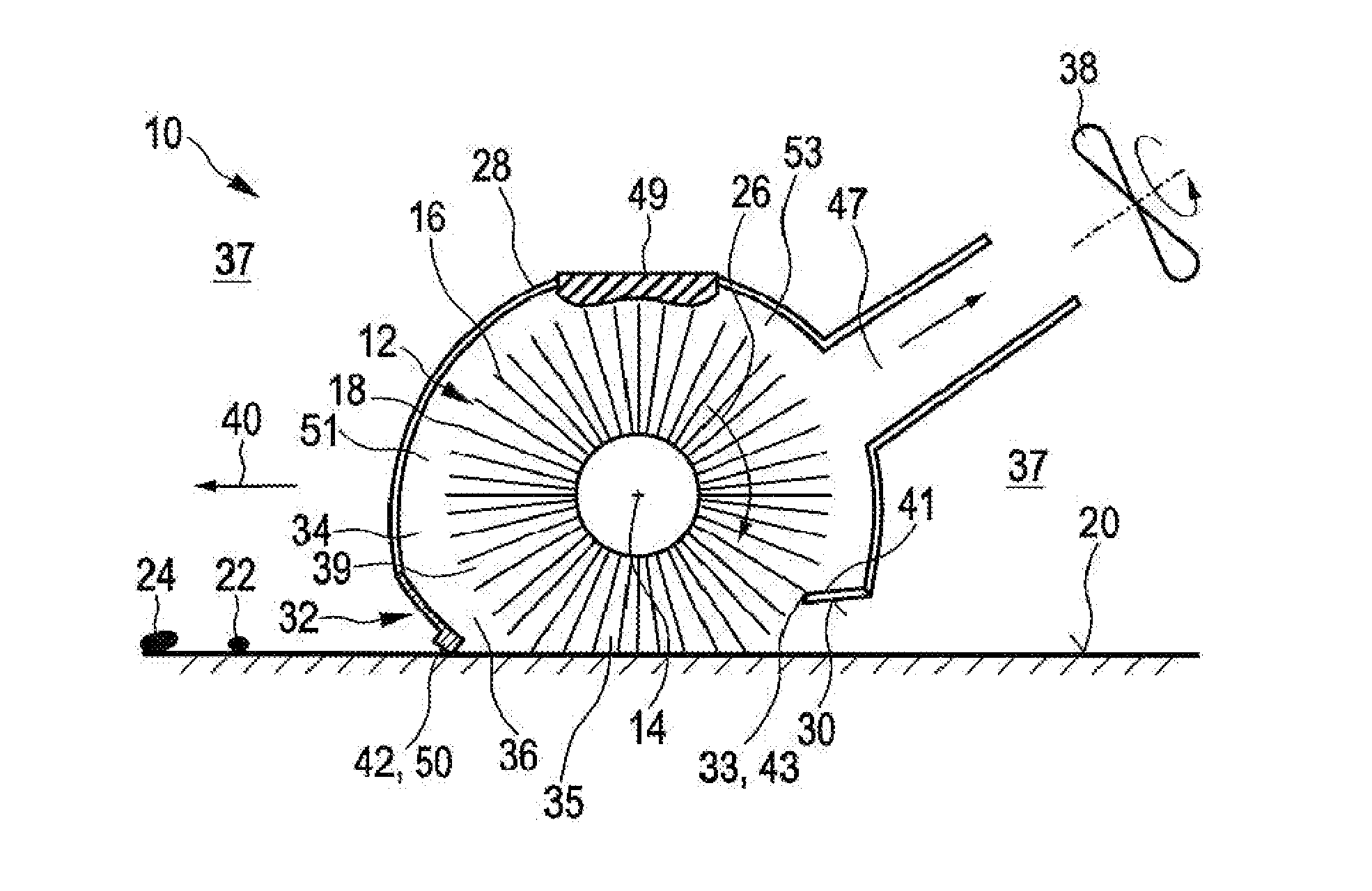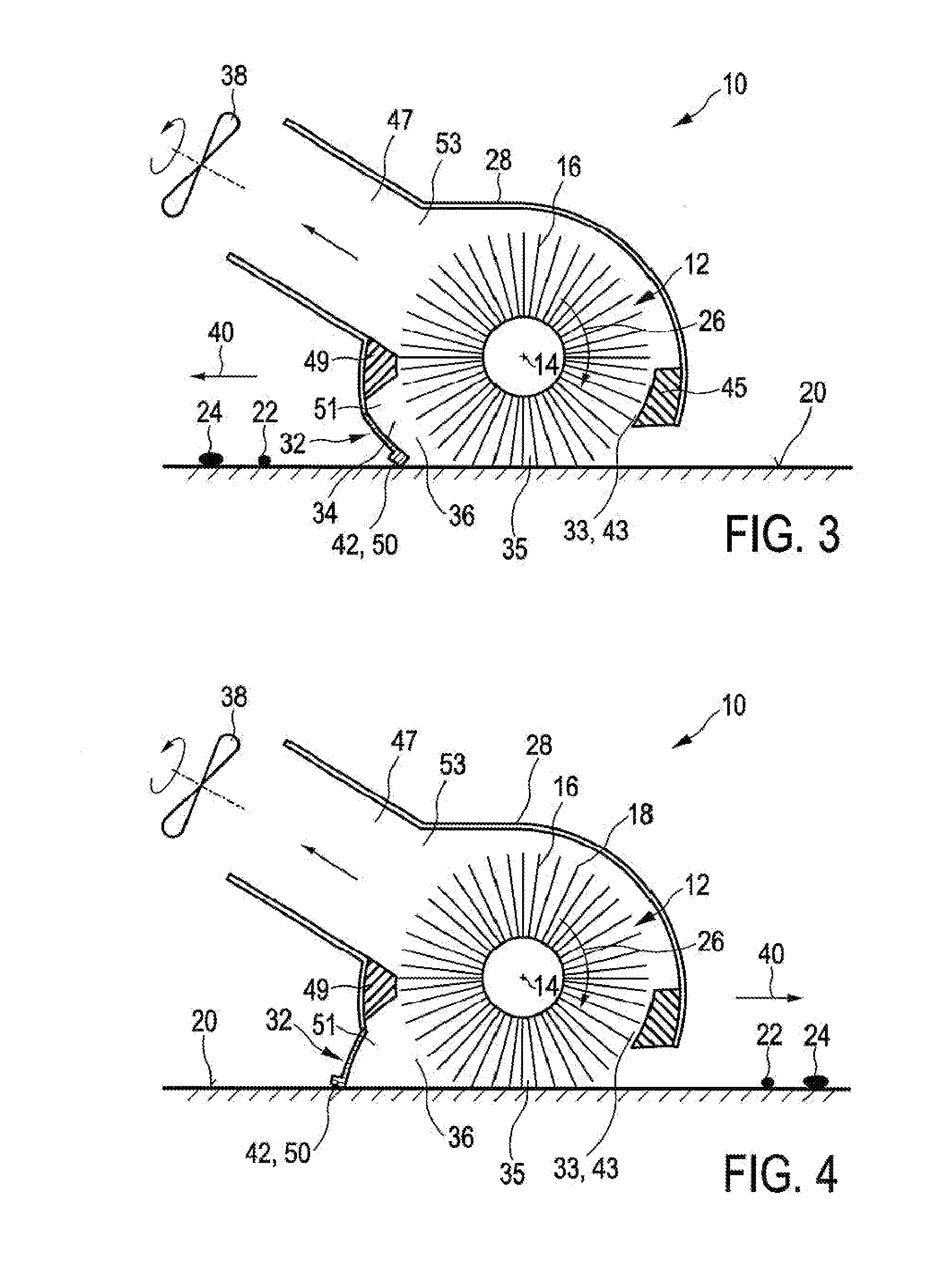Cleaning device for cleaning a surface comprising a brush and a squeegee element
a cleaning device and surface technology, applied in the direction of vacuum cleaners, carpet cleaners, domestic applications, etc., can solve the problems of not being able to pick up water from the floor to be cleaned, not being able to dry the floor, and not being able to include a vacuum source, so as to achieve optimal cleaning performance of the rotatable brush, improve the cleaning effect, and improve the cleaning
- Summary
- Abstract
- Description
- Claims
- Application Information
AI Technical Summary
Benefits of technology
Problems solved by technology
Method used
Image
Examples
Embodiment Construction
[0085]FIGS. 1 and 2 show a schematic cross-section of a first embodiment of a nozzle arrangement 10 of a cleaning device 100 according to the present invention.
[0086]In FIG. 1 the nozzle arrangement 10 is shown in a first working position, whereas in FIG. 2 the nozzle arrangement 10 is shown in a second working position. The nozzle arrangement 10 comprises a brush 12 that is rotatable about a brush axis 14. Said brush 12 is provided with flexible brush elements 16, which are preferably realized by thin microfiber hairs. The flexible brush elements 16 are substantially uniformly distributed over the periphery of the brush 12. Furthermore, the flexible brush elements 16 comprise tip portions 18 which are adapted to contact a surface to be cleaned 20 during the rotation of the brush 12 and to pick-up dirt particles 22 and liquid 24 from said surface 20 during a pick-up period when the brush elements 16 contact the surface 20.
[0087]Further, the nozzle arrangement 10 comprises a drive me...
PUM
 Login to View More
Login to View More Abstract
Description
Claims
Application Information
 Login to View More
Login to View More - R&D
- Intellectual Property
- Life Sciences
- Materials
- Tech Scout
- Unparalleled Data Quality
- Higher Quality Content
- 60% Fewer Hallucinations
Browse by: Latest US Patents, China's latest patents, Technical Efficacy Thesaurus, Application Domain, Technology Topic, Popular Technical Reports.
© 2025 PatSnap. All rights reserved.Legal|Privacy policy|Modern Slavery Act Transparency Statement|Sitemap|About US| Contact US: help@patsnap.com



